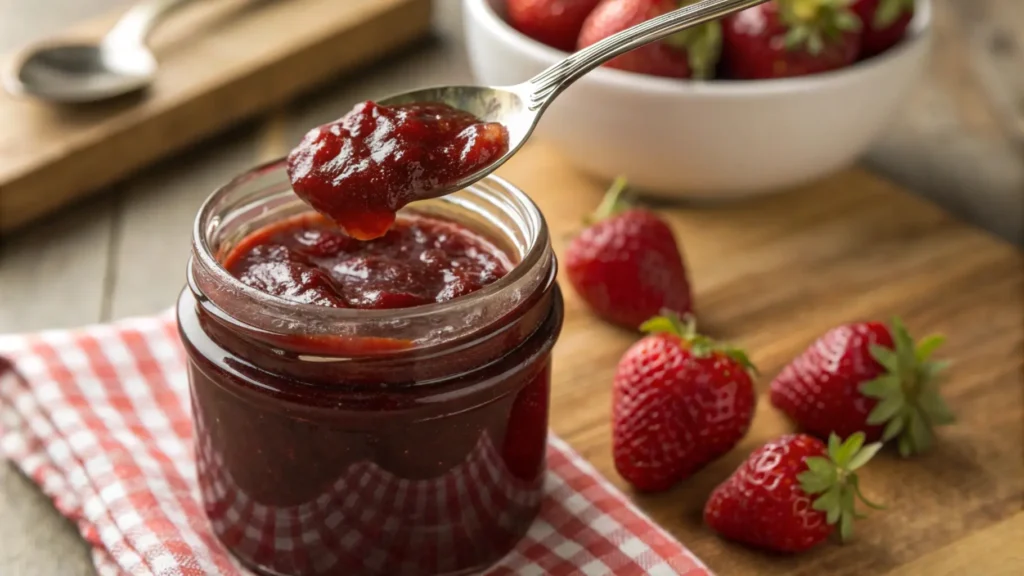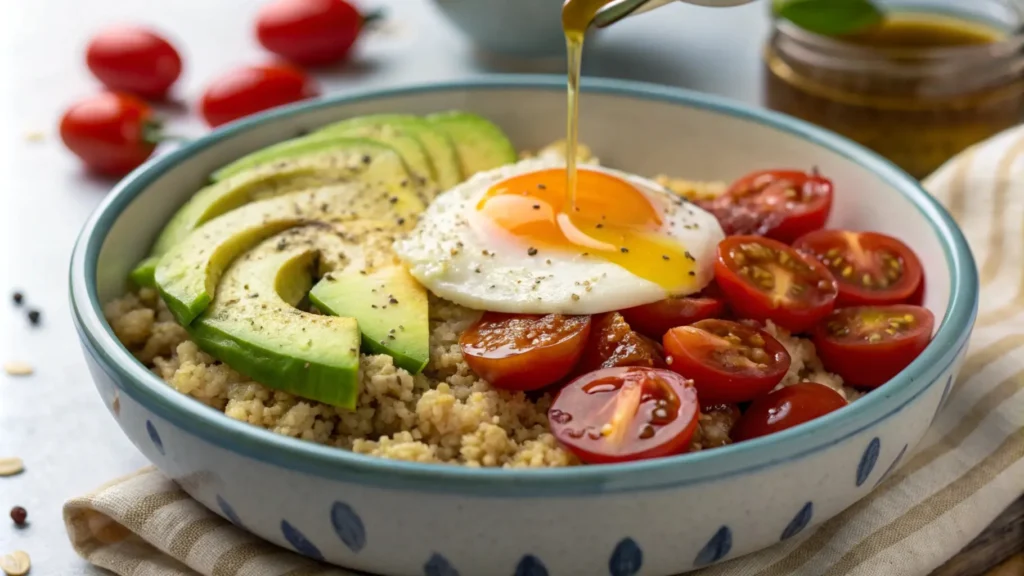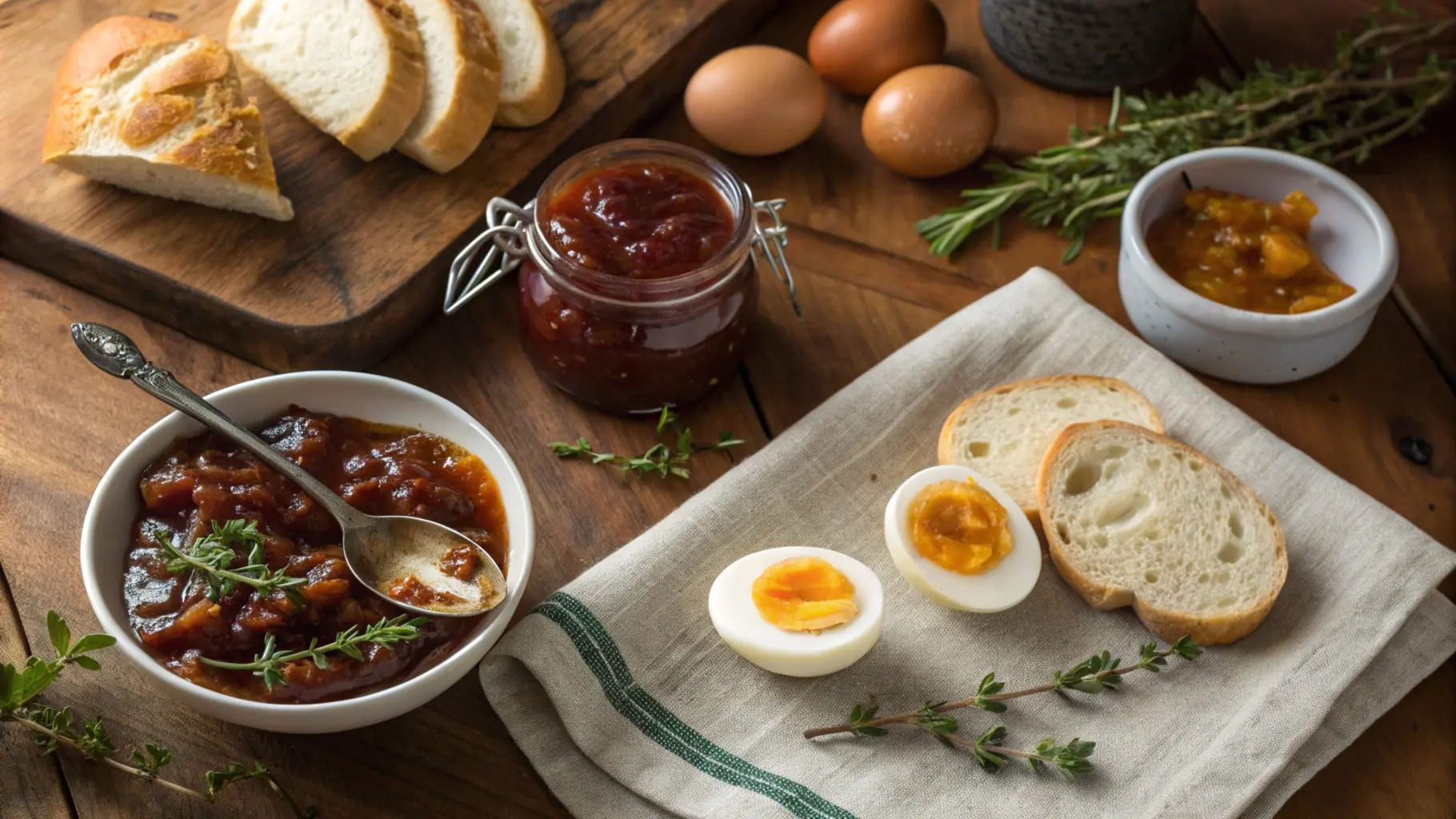Have you ever heard someone describe a food as having a “jammy consistency” and wondered what they meant? This term might sound fancy, but it refers to something we’ve all likely encountered—textures that strike a perfect balance between soft and firm. Jammy consistency isn’t just limited to fruit preserves; it’s a hallmark of perfectly cooked eggs, luscious sauces, and mouthwatering desserts. In this article, we’ll break down the science, techniques, and applications of jammy textures, guiding you to master them in your own cooking adventures. Let’s dive in!
Understanding Jammy Consistency
What Does “Jammy” Mean?
The term jammy stems from the texture of traditional fruit jams—soft, spreadable, and slightly sticky but with a structured body that holds its form. When someone refers to a jammy consistency, they’re describing a texture that’s neither too liquid nor completely solid. It’s velvety, yielding to the touch, yet stable enough to stay in place. Think of the golden yolk of a soft-boiled egg or the thick richness of a homemade berry compote.
Jammy consistency is all about balance. It’s soft enough to feel indulgent but firm enough to hold its own in recipes. This delightful middle ground is what makes it so appealing.
Common Foods with Jammy Consistency
Some foods are naturally jammy, while others require a bit of culinary finesse to achieve this texture. Classic examples include:
- Egg yolks: Perfectly cooked jammy eggs have set whites and a yolk that’s soft but not runny.
- Fruit preserves and jams: The quintessential example, with just the right mix of sugar and pectin to create that smooth spread.
- Slow-cooked tomatoes or onions: These develop a rich, jammy texture when cooked down, making them perfect for spreads or sauces.
- Desserts like custards and caramel sauces: Silky yet thick, they hit the jammy sweet spot.
Why Jammy Textures Are Unique
So, why is everyone raving about jammy textures? For starters, they’re incredibly versatile. The texture enhances both sweet and savory dishes, making them feel more luxurious. A jammy consistency also delivers an unmatched mouthfeel—velvety, smooth, and satisfying. It strikes an emotional chord, evoking comfort and indulgence.
Moreover, jammy textures add a touch of sophistication to meals. Whether it’s a glossy berry sauce draped over cheesecake or a perfectly cooked egg yolk on avocado toast, foods with this consistency elevate the entire dining experience.
The Science Behind Jammy Consistency
What Creates a Jammy Texture?
The secret behind jammy consistency lies in the balance of moisture, sugar, and cooking time. Foods with this texture retain some liquid, creating that soft, velvety feel, but they’re also thick enough to hold their shape. For example, in jams, the sugar binds with water to create a gel-like consistency, while in eggs, the combination of heat and time sets the proteins just right.
Cooking at the perfect temperature is crucial. If the heat is too high or the time too long, you’ll end up with a texture that’s either too firm or too runny. The key is finding the sweet spot where the food transforms into that perfect middle ground, where it’s soft yet stable.
Chemical Reactions Involved
Ever wondered about the chemistry behind what is a jammy consistency? It’s fascinating! In jams, sugar interacts with pectin—a natural substance in fruits—to form a gel when heated. Meanwhile, proteins in eggs coagulate when exposed to heat, creating a semi-set yolk with a luscious center.
In both cases, heat drives these transformations. For fruit, it breaks down the fibers, releasing pectin and thickening the mixture. For eggs, it slowly changes the proteins, turning them from liquid to soft solids. These processes depend on precise timing—too short, and it’s runny; too long, and it’s firm.
Temperature Control and Its Importance
Achieving a jammy texture is all about control. For fruits, cooking them gently allows water to evaporate, concentrating the sugars and thickening the mixture. With eggs, cooking them in boiling water for exactly 7-8 minutes ensures the yolk achieves that gooey, jam-like center.
Without the right temperature, you lose the balance. So whether you’re making jammy eggs or rich sauces, keep a close eye on the heat!
How to Achieve a Jammy Consistency in Cooking
Techniques for Perfect Jammy Eggs
Perfecting jammy eggs requires precision. Start by boiling a pot of water and gently lowering the eggs in with a spoon. Boil them for exactly 7 minutes and 30 seconds for large eggs. Next, transfer them to an ice bath for 3 minutes—this stops the cooking and makes peeling a breeze.
Want the yolk even softer? Cut the time to 6 minutes. For firmer edges, let them cook for an extra 30 seconds. The key is timing, so always use a reliable timer!
Cooking Fruit to Achieve Jammy Consistency

When it comes to fruits, slow and steady wins the race. To make a fruit compote or jam, combine your fruit with sugar and a splash of lemon juice. Simmer the mixture on low heat, stirring occasionally. Over time, the fruit breaks down, thickening as the liquid evaporates.
Adding a pinch of pectin or reducing the sugar slightly can also adjust the texture. For a smoother consistency, mash or blend the fruit after cooking. This method creates a delightful, jammy texture that works beautifully in desserts or as a topping.
Savory Dishes with a Jammy Texture
Savory dishes can also benefit from jammy consistency. Slow-cooking tomatoes with olive oil and herbs results in a rich, glossy sauce perfect for pasta or toast. Similarly, caramelizing onions over low heat creates a jam-like spread that’s sweet and savory.
For sauces, reduce liquids like balsamic vinegar or soy sauce over gentle heat until they thicken. These methods capture the essence of what is a jammy consistency and apply it to a variety of meals.
Applications and Uses of Jammy Textures

In Breakfasts and Desserts
Foods with a jammy consistency shine in both sweet and savory breakfasts. Jammy eggs are perfect over toast or avocado slices, while jam-like fruit sauces elevate pancakes, waffles, or crepes. On the sweeter side, desserts like fruit compotes or caramel sauces offer indulgent richness. These dishes capture the essence of jammy textures—smooth, luscious, and satisfying.
For instance, drizzling a warm berry compote over a bowl of yogurt or ice cream can transform a simple dessert into something extraordinary. If you enjoy fruit-forward breakfasts, try pairing homemade jam with freshly baked scones for a delightful treat.
In Salads and Main Courses
Savory uses of jammy consistency take dishes to new heights. Jammy eggs are a popular addition to salads, adding richness to greens and vinaigrettes. Similarly, slow-cooked onions or tomatoes can act as the perfect spread for burgers or a base for pasta sauces.
Imagine topping a steak with a reduction of balsamic vinegar until it thickens into a jam-like glaze. This not only enhances flavor but also adds an elegant texture to your plate.
In Artisan Food Creations
Chefs and home cooks alike embrace jammy textures for their versatility. You’ll often find this texture in chutneys, relishes, or even in rich barbecue sauces. Whether sweet or savory, foods with jammy consistency add depth and dimension to recipes.
Jammy Consistency in Popular Culture
The Rise of Jammy Eggs in Modern Cuisine
Lately, jammy consistency has gained a cult-like following, thanks to the internet and social media. Platforms like Instagram are flooded with images of jammy eggs atop toast, bowls, and ramen. The appeal lies in the perfect contrast between the firm whites and the soft, rich yolks—a visual and textural delight.
Food bloggers and chefs are also reinventing traditional recipes, giving dishes like rice bowls and salads a contemporary twist with jammy textures. It’s no wonder this trend has become a staple in both high-end restaurants and cozy home kitchens.
The Versatility of Jammy Foods
Beyond eggs, the idea of what is a jammy consistency extends to countless culinary innovations. From homemade marmalades to slow-roasted tomatoes, this texture adds an irresistible touch to a wide variety of meals. Its ability to work in both sweet and savory dishes has made it a favorite among food enthusiasts.
People love the indulgent feel and the sheer versatility of jammy textures. Whether you’re preparing a comforting bowl of oatmeal or crafting an elegant charcuterie board, there’s always room for a jammy component to enhance the dish.
Common FAQs About Jammy Consistency
What’s the Difference Between Jammy and Sticky?
It’s easy to confuse jammy consistency with sticky textures, but they’re not the same. Sticky textures tend to be overly thick and clingy, often making foods harder to spread or enjoy smoothly. In contrast, jammy consistency strikes a balance between soft and firm. It’s thick enough to hold its shape but spreads effortlessly, whether on toast or over desserts.
The distinction lies in how pleasant the texture feels. Jammy foods are smooth and velvety, while sticky ones may feel too tacky or heavy. This balance makes jammy textures so versatile in both sweet and savory dishes.
How Do You Prevent Overcooking Jammy Eggs?
Timing is everything when making jammy eggs. To nail the perfect consistency, cook large eggs for about 7 minutes and 30 seconds in boiling water, then immediately transfer them to an ice bath. This stops the cooking process and locks in that jammy consistency in the yolk.
Overcooking leads to a dry or crumbly yolk, far from the desired result. Using a timer and adjusting slightly for egg size ensures consistent success. Always err on the side of caution—undercooked eggs can be cooked further, but overcooked ones are hard to salvage.
Can You Reheat Foods with a Jammy Consistency?
Reheating foods like jam or compote is straightforward, but you must be careful with jammy eggs. To warm them without overcooking, place peeled eggs in warm—not boiling—water for a minute or two.
For spreads or sauces, low heat works best to preserve their jammy texture. Be sure to stir gently to prevent burning or uneven heating.
Is Jammy Consistency Always Sweet?
Not at all! While many think of jams and desserts, what is a jammy consistency applies to savory dishes too. From tomato-based reductions to onion chutneys, this texture elevates a variety of recipes. Its versatility is why it’s so beloved by foodies and chefs alike.

